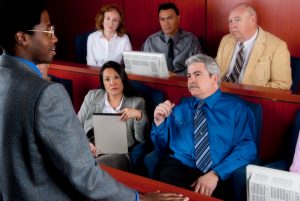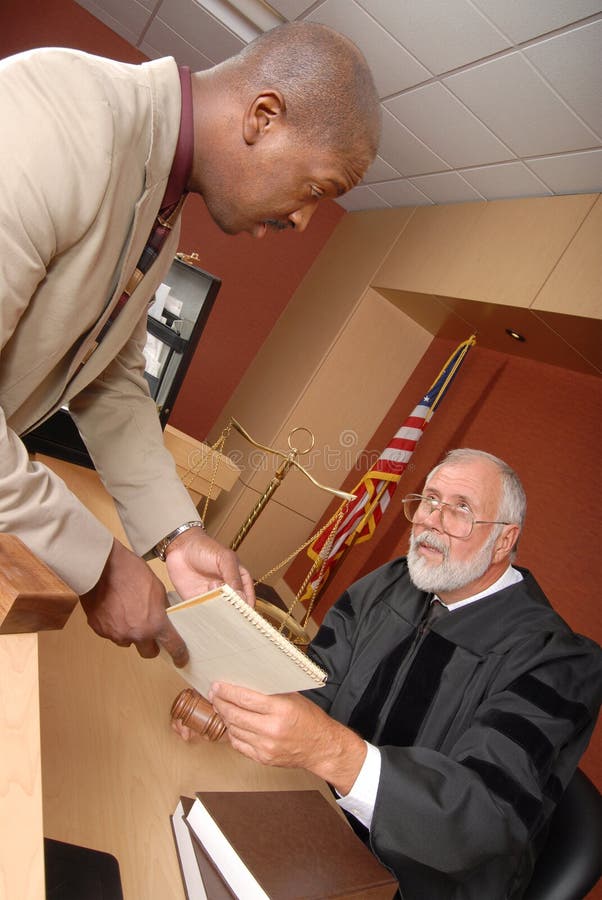Why Your Next Case Needs a Solid Trial Presentation: Insights and Techniques for Legal representatives
Why Your Next Case Needs a Solid Trial Presentation: Insights and Techniques for Legal representatives
Blog Article
How to Create Involving Trial Discussions That Gain Juries and Juries
Crafting engaging test presentations that mesmerize juries and judges is a nuanced art that needs a critical method. From the cautious consideration of the audience's expectations to the smooth assimilation of narration methods, each element plays a vital duty in forming the end result of a lawful situation - Trial Presentations. By utilizing cutting-edge visual devices, integrating interactive components, and devoting time to strenuous method and practice session, lawyers can significantly boost the impact of their court room discussions. The capability to persuade and involve through well-crafted discussions is a skill that can make all the difference in swaying a jury or judge, inevitably tipping the scales of justice in one's favor.
Understanding Your Audience
To properly involve your audience throughout trial discussions, it is important to comprehend their preferences, assumptions, and degree of competence in the topic. By tailoring your presentation to satisfy the specific demands of the target market, you can enhance their understanding and retention of the details offered.
Begin by investigating the demographics of the target market, such as age, education level, and profession. This details can aid you evaluate their knowledge with legal procedures and readjust your discussion style accordingly. A jury may call for less complex language and more aesthetic help compared to a group of legal professionals.
Moreover, consider the psychological and mental aspects of your target market. Are they thoughtful towards particular arguments or even more inclined towards facts and evidence? Understanding these subtleties can assist you frame your discussion in a manner that resonates with the audience on a much deeper degree.
Storytelling Techniques
Recognizing your audience's expectations and choices can significantly affect the efficiency of your trial discussions, particularly when applying narration methods to encourage and mesmerize. Narration is an effective device that can assist lawyers get in touch with discretionary on an extra psychological degree, making complex legal disagreements a lot more unforgettable and relatable.

Integrating dazzling details, personal anecdotes, and ornate devices can better boost the storytelling experience, keeping the target market involved and invested in the end result of the instance. By crafting a persuasive story that resonates with the values and feelings of the jury and courts, legal representatives can boost the chances of winning their disagreements and attaining desirable verdicts.
Aesthetic Presentation Devices
Utilizing visual presentation devices can greatly boost the influence and effectiveness of test discussions by supplying a visually engaging means to convey intricate info to courts and juries. Visual help such as graphes, charts, representations, and great site computer animations can assist simplify detailed information, making them much more obtainable and understandable to the target market. By integrating aesthetic aspects right into trial presentations, lawyers can create a compelling story that resonates with jurors and leaves a lasting impression.

Integrating Interactive Components
Integrating interactive aspects into trial presentations can enhance target market involvement and understanding, promoting a more immersive and interactive court experience. By integrating elements such as interactive timelines, 3D computer animations, clickable exhibitions, and digital truth restorations, lawyers can captivate jurors and courts, making complicated details much more available and memorable.
Interactive timelines enable for a vibrant display of chronological events, aiding the target market comprehend the sequence of vital events in a case. 3D computer animations can bring crime scenes or accident reconstructions to life, offering a comprehensive graph that helps in clearing up elaborate information. Clickable exhibitions allow users to connect with evidence, papers, or images, permitting a hands-on exploration of critical info.
Additionally, virtual fact reconstructions can transport the audience into the heart of the activity, offering an engaging perspective that traditional discussions may do not have. These interactive components not just involve the viewers however also empower them to actively take part in the test procedures, resulting in a much more impactful and persuasive court presentation.
Method and Rehearsal
To efficiently leverage the possibility of interactive aspects in trial discussions, detailed method and rehearsal are essential to ensure smooth combination and delivery in the court room setting. Technique and wedding rehearsal help test presenters come to be accustomed to the web content, timing, and flow of their discussions, enabling them to confidently navigate through various elements such as video clips, animations, or interactive graphics. By practicing their distribution, presenters can improve their speaking abilities, body language, and total presentation design to enhance persuasion and reliability prior to the jury and judge.
During session, presenters can recognize any technological issues that may emerge with interactive aspects, making certain that whatever runs efficiently during the actual test. Additionally, practicing in front of a mock target market or colleagues can supply beneficial responses on the performance of the interactive components and the general discussion. This feedback enables speakers to make essential adjustments and enhancements prior to stepping into the courtroom, ultimately enhancing the effect and success of their trial presentations.
Final Thought
Finally, developing engaging trial discussions that mesmerize courts and why not check here courts calls for a deep view website understanding of the target market, effective storytelling methods, aesthetic devices, interactive components, and extensive method (Trial Presentations). By applying these strategies, attorneys can effectively communicate their disagreements and evidence in a compelling way that resonates with the decision-makers in the court
Using visual presentation tools can significantly boost the influence and performance of test discussions by giving an aesthetically interesting method to communicate complicated info to judges and juries. By incorporating aesthetic components right into trial presentations, lawyers can create an engaging story that resonates with jurors and leaves a long lasting perception.
One popular aesthetic presentation device is the use of multimedia discussions, which allow for the assimilation of video clips, photographs, and audio recordings to supplement spoken arguments. Trial Presentations.To successfully utilize the potential of interactive aspects in test presentations, extensive method and rehearsal are vital to make certain seamless integration and delivery in the courtroom setting. Method and rehearsal aid trial speakers come to be familiar with the material, timing, and flow of their presentations, permitting them to with confidence browse through various aspects such as video clips, animations, or interactive graphics
Report this page